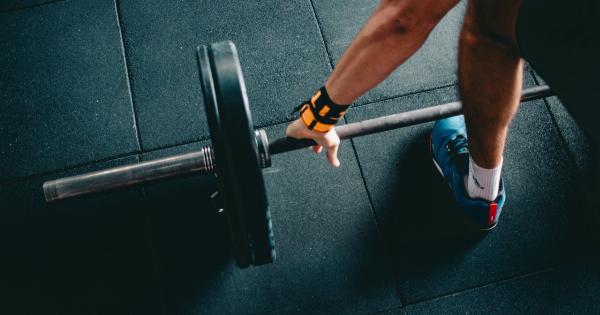Running is a fantastic form of exercise that offers numerous health benefits, but it can also put a strain on your knees.
Whether you’re a seasoned runner or just starting out, taking steps to protect your knees is essential for preventing injuries and ensuring a long-term running career. In this article, we will explore various strategies to make running easier on your knees.
1. Invest in good running shoes
One of the most important factors in reducing knee stress while running is having proper footwear. Invest in a good pair of running shoes that provide support, cushioning, and stability for your feet.
Ensure that your shoes fit properly and are designed for your specific foot type to prevent any biomechanical issues that may contribute to knee pain.
2. Strengthen your leg muscles
Strong leg muscles can help absorb the impact of running and take some of the load off your knees. Incorporate strength training exercises specifically targeting your quadriceps, hamstrings, and calves into your regular workout routine.
Squats, lunges, leg presses, and calf raises are some examples of exercises that can help improve leg strength.
3. Warm-up before running
Before heading out for a run, it’s crucial to warm up your muscles and joints to prepare them for the activity.
Perform dynamic stretches, such as leg swings, hip circles, and walking lunges, to increase blood flow, loosen up your muscles, and improve your range of motion. This will reduce the stress on your knees during running.
4. Gradually increase mileage and intensity
When starting or progressing your running routine, it’s important to take it slow and gradually increase both mileage and intensity. Sudden increases can overload your knees and lead to injuries.
Aim to increase your weekly mileage by no more than 10% and include recovery days to allow your body to adapt and rest.
5. Mix up your running surfaces
Constantly running on hard surfaces like concrete can increase the impact on your knees. To reduce the stress, try mixing up your running surfaces. Incorporate softer surfaces like grass, dirt trails, or rubber tracks into your routine.
These surfaces offer more cushioning and are gentler on your knees.
6. Pay attention to your running form
Proper running form plays a crucial role in minimizing knee strain. Maintain an upright posture, relax your shoulders, and engage your core muscles. Avoid overstriding and aim for a midfoot strike instead of landing on your heels.
Keep your stride light and quick, and try to maintain a cadence of around 180 steps per minute.
7. Take rest and recovery days
Rest and recovery days are just as important as your running days. Your body needs time to repair and rebuild after exertion. Avoid running every day and incorporate rest days into your schedule.
Use these days to engage in low-impact activities like swimming or cycling to give your knees a break.
8. Cross-train to improve overall strength
Engaging in cross-training activities can help you build overall strength and reduce knee strain while running.
Incorporate exercises like cycling, swimming, or yoga into your routine to work other muscle groups and give your knees a break from the repetitive impact of running.
9. Listen to your body
Tuning in to your body’s signals is crucial for preventing knee injuries. If you experience pain or discomfort in your knees during or after running, take it as a sign to ease off or rest. Pushing through pain can lead to long-term damage.
Consult with a healthcare professional if the pain persists or worsens.
10. Include knee-friendly exercises
Lastly, adding knee-friendly exercises to your routine can help improve knee stability and reduce the risk of injury.
Exercises like clamshells, glute bridges, and lateral leg raises can strengthen the muscles around your knees and provide more support during running.
By following these tips and incorporating them into your running routine, you can make running easier on your knees and enjoy the benefits of this fantastic form of exercise while minimizing the risk of knee injuries.





























